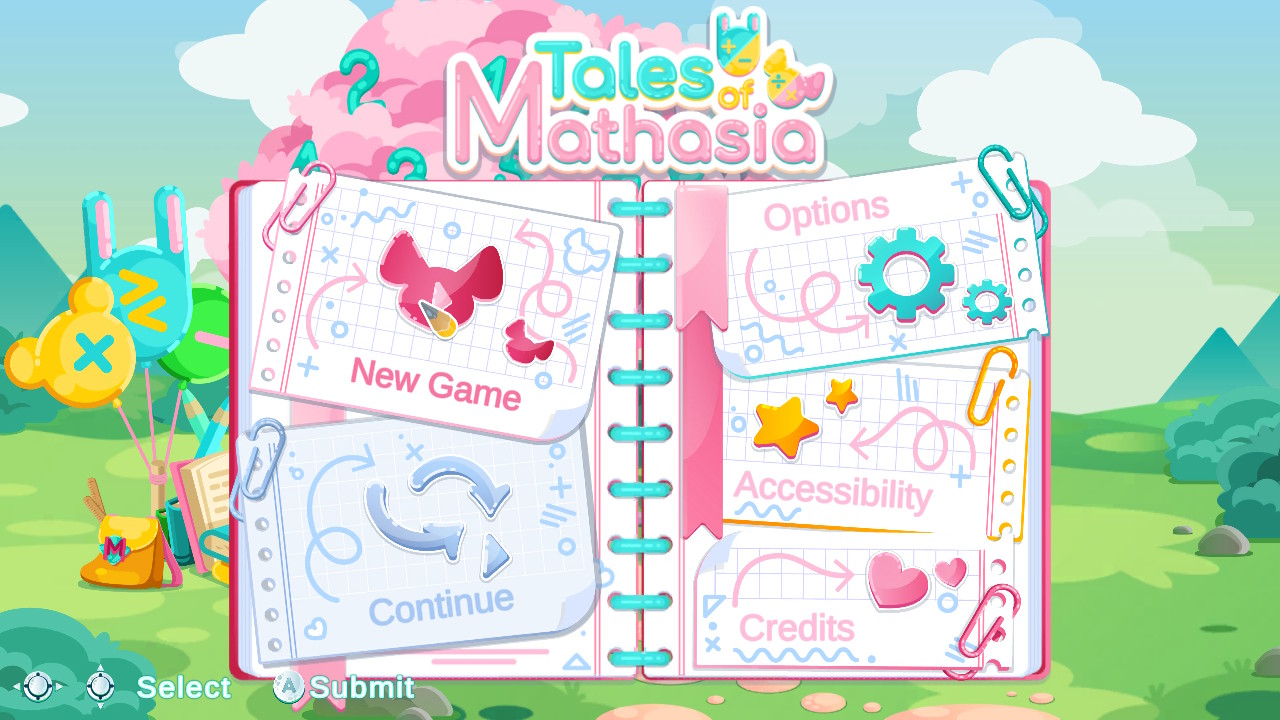Tales of Mathasia is an educational puzzle title for young children developed by Pancake Games and published by Ultimate Games. It’s a short and sweet game that teaches counting, addition, and subtraction through a simple storyline.
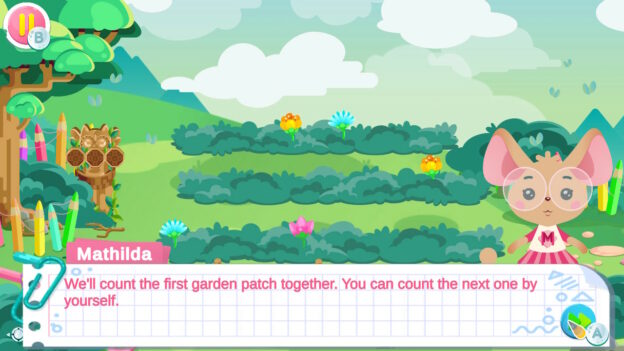
The gameplay begins with a mouse named Mathilda introducing herself to you. She brings you to her garden and teaches you how to count her flowers. But then Sparrow comes along and ruins everything, covering it all in purple goop. Now, we need to solve math problems to eliminate the goop.
In Tales of Mathasia, there are 16 levels total, broken into four segments: The Uncountable Mountains, Great Number Plains, The Dividing Forest, and Multiplication Islands. There’s no multiplying or dividing in the game, though.
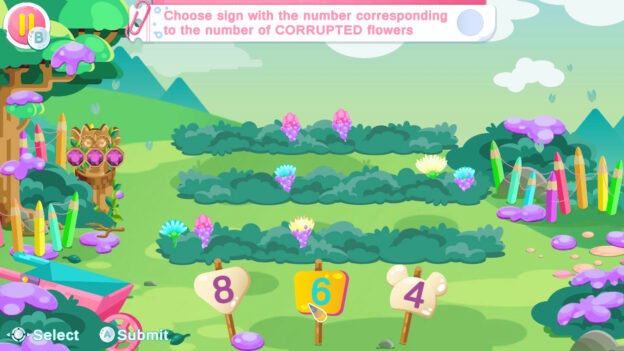
The first four levels are with Matilda, and you meet up with two other animal friends to aid you in the next eight levels. Andrea the Seal teaches you addition, and Adam the Lion teaches subtraction. The final four levels are Sparrow’s hideout, so it’s a mixture of everything you’ve learned thus far.
Each level, more or less, was the same. For counting, there are multiple stones with purple goop on them. You need to count the purple spots and choose one of the three given answers at the bottom of the screen to match it with. Adding and subtracting was set up the same way, except the stones had numbers on them with a plus or minus sign in between them.
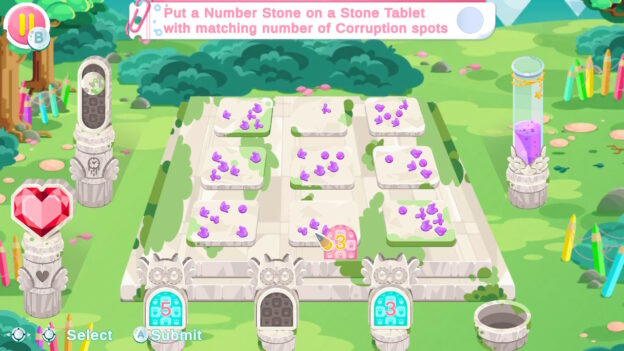
Sometimes, the game gave you three incorrect answers, and you’d have to throw a number away, and the answers would reset. I didn’t understand the point of this; I had to do it twice throughout the whole game. Also, when you use an answer, the other two answers reset anyway. The equations remain, though. The only equation to reset is the one you solved.
Yeah, in Tales of Mathasia, multiple equations are provided before you. First, you have a list of them, then the level, there will be three, and the level after that, there will be four. In the final levels, you’re presented with five equations to figure out. The integers increase, too. For example, the first addition level would have 2 + 5. The next level would show 2 + 5 + 3, and so on.
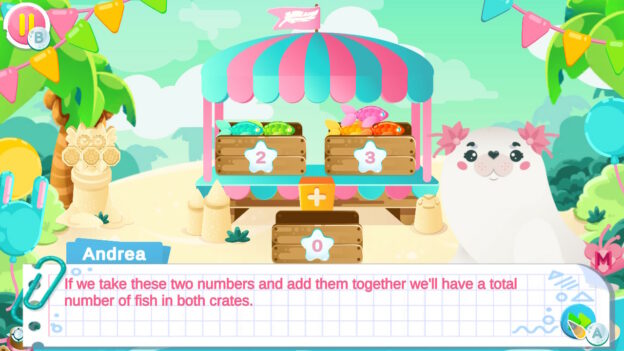
Instead of rapid math facts, this title requires some actual brain power through trial and error of solving every equation just to see if one of the given answers below matches. As an adult who still counts on her fingers, I actually lost bits of heart in the final levels because I was too slow. Each equation was a mixture of adding and subtracting five numbers. Although, the timer itself is pretty slow, and the pieces of heart I lost were only a little bit at a time. I don’t think it’s really possible to “lose” this game.
With that said, I’m not entirely sure younger kids will enjoy it. Seeing a group of 25 numbers together with smaller plus or minus symbols in between them was actually pretty overwhelming to look at on one screen. There are no difficulty settings, either. Instead of using higher numbers as the levels go, the game simply keeps adding more integers, which adds a different level of difficulty.
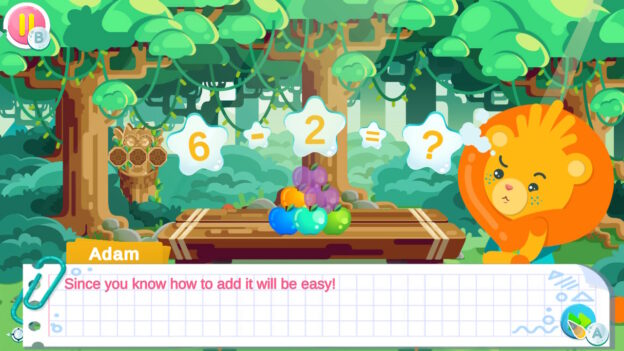
However, everything about Tales of Mathasia is cute. The characters are adorable, the graphics are vivid and inviting, and the music is soothing. The voice acting was pretty good, too, but it was slow. I think I spent more time listening to the characters talk and explain things than I did doing math facts. They were encouraging, though, so that was nice.
The game itself played well. It took me about an hour to get through the whole thing. However, I did have to do one level over because of a glitch. The text box was still on screen, and when I pressed the A button to move along, the game assumed I had chosen one of the answers hidden underneath. It was, of course, wrong, so I needed to redo the whole level. When I started it over, Adam the Lion finally explained subtraction to me, which I then realized he hadn’t done before.
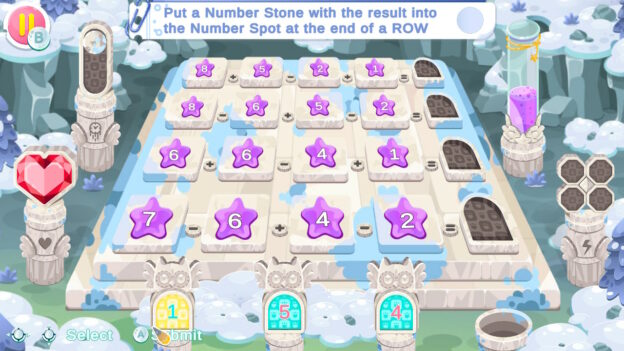
I don’t think my seven-year-old nephew would have the patience for this game. He struggles in math, and I know those final levels would be overwhelming for him. My eight-year-old niece would probably enjoy it more, but she also struggles in math and would most likely quit the game at those final levels. Of course, every child is different.
I think it would help if this title had customizable options, such as difficulty settings, age groupings, or choosing which type of math you want to focus on. Overall, Tales of Mathasia is a cute game and certainly does an excellent job explaining addition and subtraction to a younger audience.
Review: Tales of Mathasia (Nintendo Switch)
Fair
Overall, Tales of Mathasia is a cute game and certainly does an excellent job explaining addition and subtraction to a younger audience.

